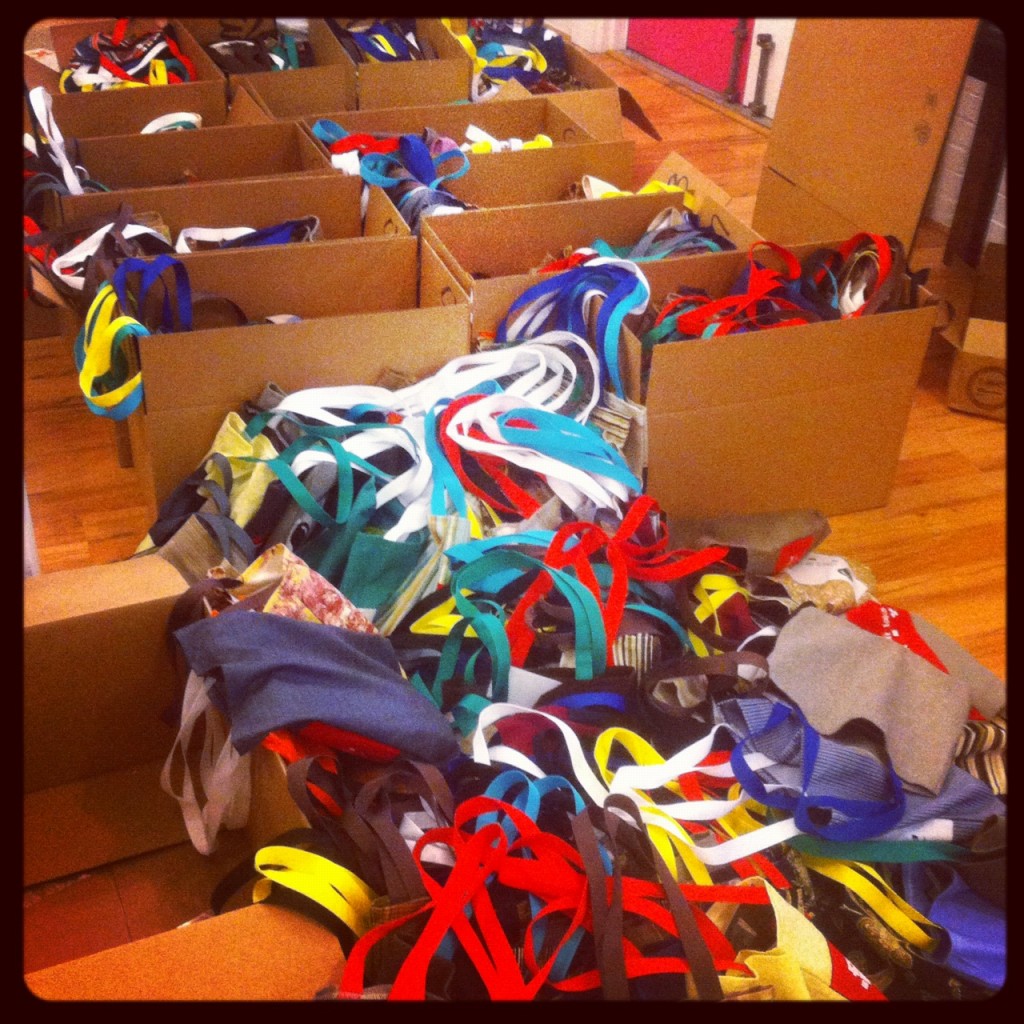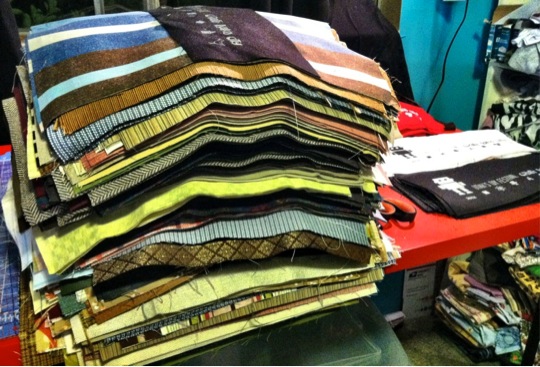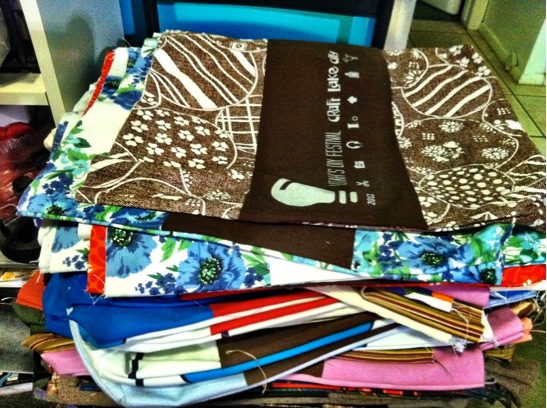The Story Behind Craft Lake City’s 2012 Festival Bag
 A few of the Craft Lake City bags at the CLC HQ, waiting to be delivered
A few of the Craft Lake City bags at the CLC HQ, waiting to be delivered
to the Gallivan Center. Photo: Karamea Puriri
Nine months prior to the canopy tents being set up and the banners being hung, Angela Brown, the editor of SLUG Magazine and Festival Director of Craft Lake City, had an ambitious idea brewing in her mind. Craft Lake City had just enjoyed their third annual event a few months prior, but plans for the following year’s festivities were already being set into motion. The first three years of the festival had showcased hundreds of local artists displaying and selling their handmade endeavors, all of which had received an artist bag full of goodies, festival information, and promotional items from local supporters and sponsors of the event.
Entering into the fourth year of the event, Brown wanted to continue on with the tradition of each participating artist receiving a VIP bag, but wanted to take it in a different direction. A huge goal of the festival is to utilize its alumni whenever possible for new projects, and the artist VIP bags were a perfect opportunity to do so. Instead of having them outsourced, she approached me to see if I would be interested in hand making each bag in November of last year.
I am the designer and creator of Sorry Clementine, a local clothing company based in Salt Lake City, Utah and a participant of the festival each of the last four years. In its first year, Craft Lake City had been a huge launching point for my clothing company into the local market and was one of the biggest catalysts into shifting my business from being exclusively online to now having a large local presence. Needless to say, it holds a special place in my heart and in my personal journey of where myself and my company is today. The concept of these bags being handmade instead of mass-produced was instantly understood and very appealing to me, and the fact that I would get to make all of them was even more appealing. I instantly said yes, and the beginning planning stages started shortly after.
What could be viewed as a simple bag required many thoughts and decisions, and in a collaborating effort, prototypes began to be made. Decisions such as fabric selection, branding options, size dimensions, and logo placements are just a few of the factors that went into the design concept as a whole. Through this process we decided that we wanted all of the bags to be made from locally collected, upcycled vintage fabric, and at the end of the prototype planning stage, we not only had a clear vision of what this bag would look like, but I also felt that the bag was telling a story of the vision of the festival itself. The bag was designed and built by my hands, from raw materials that had been forgotten, discarded or unwanted. The patch style logo had been printed in collaboration with Copper Palate Press, a local screen printing company, and the overall concept of the bag came from Angela Brown, a woman who passionately loves Salt Lake City and the creative energy that resides and thrives here.
Before the actual construction of the bags could begin, I began the process of collecting the raw materials needed to make the bags. This was a long laborious task that involved much scouring and digging at local thrift stores from Ogden to Draper. The amount of fabric needed to make four-hundred bags is a lot to acquire when accompanied with the need for it to be sourced in a specific and conscientious way, in addition to needing it to be in a certain weight and condition. The fabric sourcing alone took over 4 months to complete. During that time I began to cut out the front and back pieces for each bag, cutting the logo prints into patch strips, and began pairing the patches with their fabric piece counterparts. I had four stacks going, one for each color of patch. All together 800 fabric rectangles, 400 logo patches, and 800 strap handles had been cut to their needed lengths and dimensions and the sewing could begin!
The process of sewing the bag started by sewing the logo patch across the front of the bag, after that the two side seams, and bottom seam were serged together. While the bag was still inside out both bottom corners were sewn together in a way to create a square shaped bottom when the bag was flipped right side out. The final step was to attach the strap handles, serge, and topstitch the top hem. This process was repeated 397 times to end up with 398 bags in total (two shy of our original goal of 400!).
Once all of the bags were finished, they were delivered to the Craft Lake City headquarters to be filled up, and a few days later, began to be distributed to the artists as they checked in to start setting up for the event that morning. Volunteers of the event also received bags and a limited portion were set aside for the public to be able to purchase at the festival throughout the day. It was incredibly rewarding to know that just a short time prior, there was a bunch of discarded and unwanted fabric all around the valley’s thrift stores that had been transformed into something functional, appreciated and actually being used all around the festival by the artists, volunteers, and visitors! I feel sincerely grateful to have been able to put my little handmade touch on what is usually a very mass produced commercial product and am excited by the appreciation shown for handmade items in our community.
 The final product. Photos by: Suzanne Holifield
The final product. Photos by: Suzanne Holifield
Craft Lake City sat down with Suzanne when she was almost finished with the bags and got an inside look at what it is like to make 398 handmade bags. Check it out right here:



